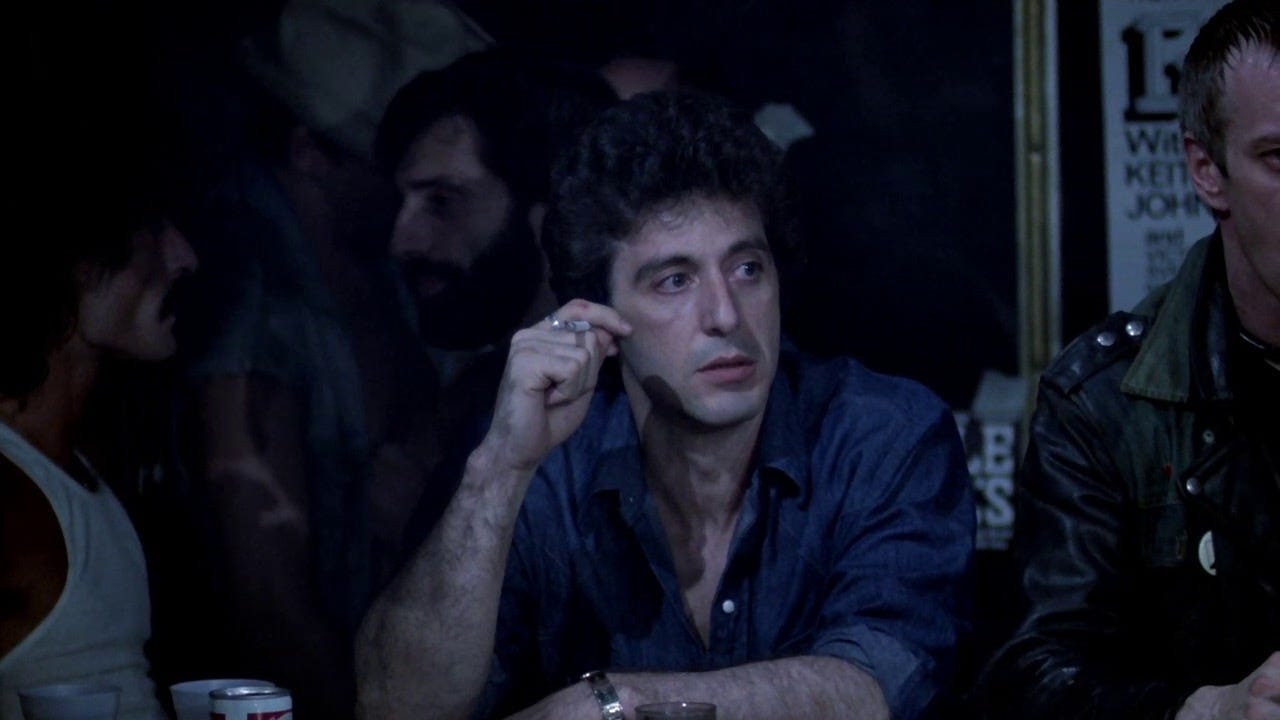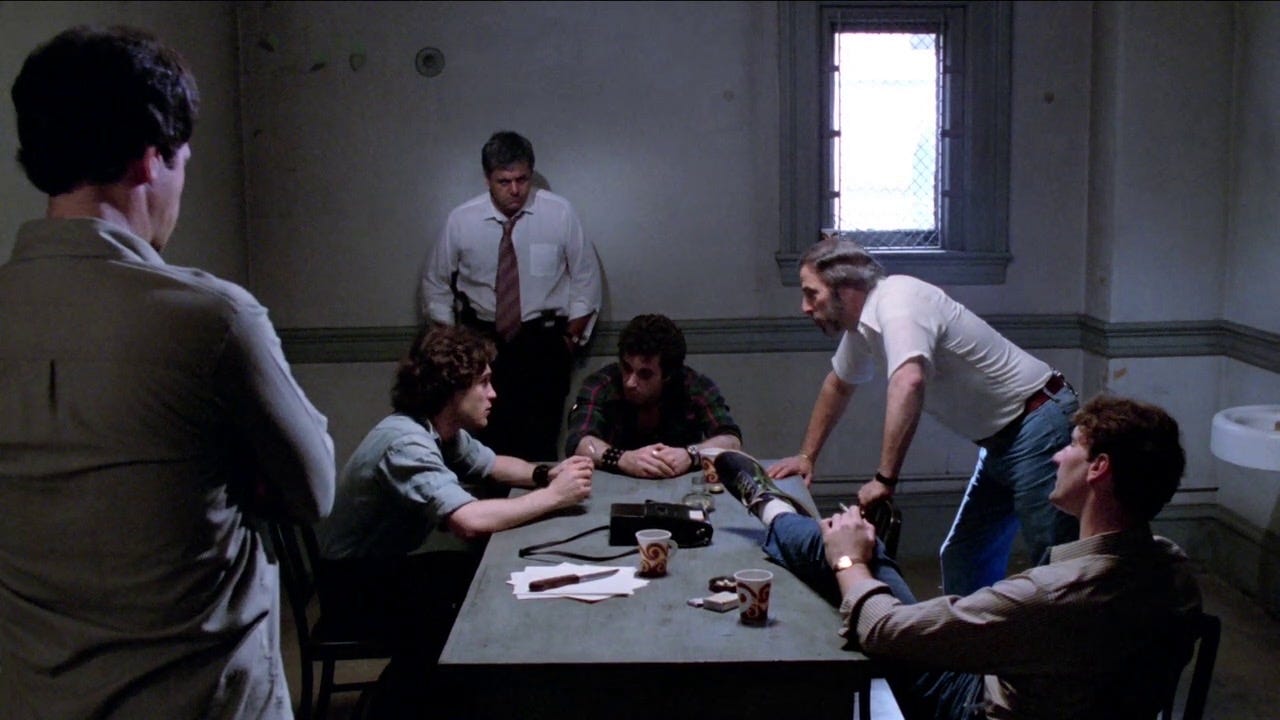William Friedkin’s 1980 film CRUISING was ahead of its time.
The film is ultimately Friedkin’s take on the Giallo genre. Unlike other films of the genre, CRUISING is centered entirely around gay men and the underground heavy leather, S&M club scene of the 1980s.
Steve Burns, played by Al Pacino, is a straight man in a loving relationship with his girlfriend Nancy, played by Karen Allen. Steve was chosen by his police Captain for an assignment to go undercover as a gay man. There is a serial killer on the loose who only kills the men he has sex with. Due to Steve’s resemblance to the killer’s previous victims they need Steve to try to find the murder and sleep with him since he is the murderer’s type. The NYPD will use Steve as bait. This prompts Steve to go undercover, start cruising frequently in an underground scene of gay men looking for short-term intimacy.
Burns is forced to keep his assignment a secret until the job is done. Since he moves into his own apartment, under the name John Forbes, he’s forced to leave his girlfriend for an undisclosed amount of time until the job is completed. She’s aware he’s undercover but not what he’s doing undercover. These all leads to an assumption by outside observers that Steve is a closeted gay man and he can’t explain why he is straight due to the secrecy of his undercover assignment. This makes Steve legitimately worried about losing his girlfriend and potentially his heterosexuality while deep under cover. The film implies a mental struggle for Steve’s sexuality and that he is genuinely conflicted after so much time sleeping with men as detective work.
This all takes place amongst a background of NYPD cops fetishizing and raping trans women while also beating and arresting innocent gay men as they please. It all goes unchecked by the 1980s NYPD. The police are searching for a serial killer who stalks and kills gay men yet they are blind to their own corruption and predatory tendencies with similar motives. They are just as harmful to the gay community while pretending to be protecting it.
The interrogation scene is hard to watch but unforgettable. The police brutalize and psychologically harass an innocent gay man, alongside Al Pacino whom is still undercover after a wiretap innocent goes wrong. The police wrongfully accuse the man who slept with Steve of being the serial kilter but not without brutalizing him. The most memorable part of this scene is when a very tall and muscular Black man, wearing only a cowboy hat and a jockstrap, enters the room and slaps Al Pacino out of his seat. This is apparently an old NYPD interrogation tactic that director William Friedkin adds to the scene. The point of this tactic is make it so nobody would believe the victim if they tried to tell anyone what happened. The chance of someone believing that a very large, nearly naked man only donning a cowboy hat brutalized you during a 1980s police procedure are very low and they’d call you crazy. The police never acknowledged the man that came into the room and it makes the victim feel insane. Did that just happen? Who is that guy? Why did he hit me? Why is he wearing that? This tactic is so effective it not only works on Al Pacino’s character Steve but the audience itself.
The film is an incredibly subversive for it’s time and a complicated approach to masculine insecurities around sexuality and police brutality. It’s a film so unabashedly gay that 1980s America was too bigoted to realize they were missing out on a fantastic slasher, crime thriller. It’s a shame this was given a Razzie simply because of its depiction of gay men’s sexuality. There is something about the film that seems to be so unafraid of an audience’s disdain and is only focused on an artistic expression.
It’s one of multiple masterpieces by William Friedkin and I highly recommend you watch it.
Thanks for reading,
Kevin










